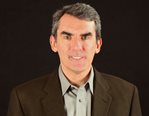



Feature Story
More feature stories by year:
2024
2023
2022
2021
2020
2019
2018
2017
2016
2015
2014
2013
2012
2011
2010
2009
2008
2007
2006
2005
2004
2003
2002
2001
2000
1999
1998
 Return to: 2015 Feature Stories
Return to: 2015 Feature Stories
CLIENT: IMAGINATION TECHNOLOGIES
Nov. 18, 2015: i3 It Is Innovation
 As the Internet of Things (IoT) quickly becomes a reality, it is changing the way we interact with the world and our expectations about what we consider to be "intelligent." Coming soon, smart systems will sense data from the real world and automatically react in real time. These systems will find applications across all industries in every corner of the globe, and some of the best use cases are starting to appear in the roadmaps of wearable devices.
As the Internet of Things (IoT) quickly becomes a reality, it is changing the way we interact with the world and our expectations about what we consider to be "intelligent." Coming soon, smart systems will sense data from the real world and automatically react in real time. These systems will find applications across all industries in every corner of the globe, and some of the best use cases are starting to appear in the roadmaps of wearable devices.
The promise of IoT and wearable devices goes beyond just connecting everything to the Internet. It involves combining information or service requests with an understanding and appreciation of the environment. It's all about context.
At the heart of these intelligent systems are countless sensors. Sensors have long been a mainstay of embedded systems, but now with the emergence of IoT and wireless connectivity, sensors will be the linchpins, collecting and connecting bits of data in this new world of smart, intelligent devices.
Sensors handle the essential task of translating the physical world around us into electronic signals. Through the algorithms developed by software experts and sensor manufacturers, we can convert this physical information into data values.
A fitness band is not useful if its only functions are to record and report movement. It must translate a sequence of movements and classify them as part of an activity that the user can relate to. For example, if the system can synthesize data such as steps taken in a day, chart daily activities and compare them to an average Monday, or determine the difference between a weekend and work week workout, it becomes a useful tool from a consumer's perspective.
However the task of managing and reading a sensor is not as simple as it appears. The calibration and compensation of environmental variables can be complex. The role of multiple sensors combined into one view is referred to as sensor fusion. It involves advanced mathematics and cross correlation so that a single data value can be assigned to a particular event or measurement.
Complicating matters further, sensors based on different technologies or alternative algorithms may have differences and variations due to manufacturing or environmental background effects. Combining the results of several sensors can be a way to cancel out unwanted variations and achieve a single, efficient and relevant view of an event.
Sensors for wearables and IoT markets must interpret data and give it meaning in order to drive decision making. They must include advanced algorithms for pattern recognition, prediction and analytics, along with sensor fusion to reduce errors and noise.
Wearables have entered the healthcare market as informal advisors. Initial devices such as monitors are useful and can be incorporated into a user's wellness plan. But can heart rate monitors assist in critical situations?
We usually rely on first responders to deal with critical emergency situations who are forced to manage critical events with partial and perhaps incomplete information. For example, a group of paramedics responding to an emergency may find themselves in a scenario with multiple patients perhaps in different locations and not in direct line of sight. Traditional walkie-talkie style radio communication can help, but does not provide a complete picture.
What these first responders need is a guide to the location of fellow team members and an understanding of who is already actively engaged with a patient and who is available to assist with others. With the wearables of tomorrow, they will be assisted by communications based on location and ground conditions that will allow greater insight into events as they unfold.
Devices such as personal heart rate and movement monitors can alert teams to individual members' status, indicating when back-up resources might be required. This targeted, location-based communication can help avoid broadcasting messages that distract the rest of the team and management of resources.
The sports industry has already adopted various technologies to assist in maintaining rules and regulations, ranging from monitoring split second timing during Olympic events to tennis court line detectors. But now wearables technologies are extending into players' shoes, clothing and helmets, with new and interesting applications. Concussion sensors in helmets and other safety equipment will aid in the understanding of the potential accumulation effects of repetitive injury. A coach can observe the location and activity monitors of the team and make changes to the game plan dynamically as events unfold.
Adaptive learning will also become an integral part of wearable technology. For example, since posture and form play critical roles in sports, shoes of the future will guide an athlete on the optimal weight distribution and stance. It will also be possible to correlate external variables like weather, calendar events and other factors to derive an overall projection for the user. If a user's calendar indicates that he plans to run that day and he accidentally packs the wrong shoes, the system can alert the user that they have packed the wrong gear.
These are just a few examples of innovative wearable devices for consumers. Such innovations are not limited to applications where sensors simply record and report information, but will be based on analytics and context to guide and assist the user. As edge devices that gather raw event measurements, sensors provide the former. Most projections for IoT and wearables expect that much of the analytics and generation of contextual information will be conducted in the cloud, where detailed records of all sensor readings will be managed.
However, such a methodology has several drawbacks. First, this cloud centric model puts a huge drain on system bandwidth and power efficiency. This can be mitigated by enabling the raw sensor data to be qualified by local analytics before it is provided to the cloud. Another challenge is that Internet connectivity is not always available or reliable, so local intelligence and analytics provide a clear advantage and complement cloud-based solutions with essential preprocessing at the edge nodes.
Intelligence in the edge device can be complemented by smart hubs and routers on the local network that enhance the total system bandwidth and energy efficiency. In this way, requests from the cloud to the nodes can be managed and filtered intelligently and efficiently.
Nodes typically operate at low power and with limited resources. In the absence of trigger events, they are in a sleep state most of the time. But multiple uncoordinated status requests from the cloud will quickly drain the resources of battery and bandwidth. An intelligent router and hub will be useful in managing the priority sequence of requests. For example, if a temperature reading with a time stamp can he held at the local hub, requests for general range measurements can be managed at the hub level. When a high accuracy request arrives, the hub can then intelligently forward the request to the sleeping edge node for processing and analytics.
As we enter a world of active intelligence from all things inanimate around us, wearable technology is no longer a mere fashion statement. It needs to offer relevant, timely and concise information to users, instead of a deluge of data points. Whether it's a smart wrist band or sensors embedded in shoes or clothing, future designs must incorporate intelligence and context to take the human- to-device experience to a whole new level.
to-device experience to a whole new level.
Kevin McDermott is director of IoT segment marketing, Imagination Technologies.
Return to: 2015 Feature Stories